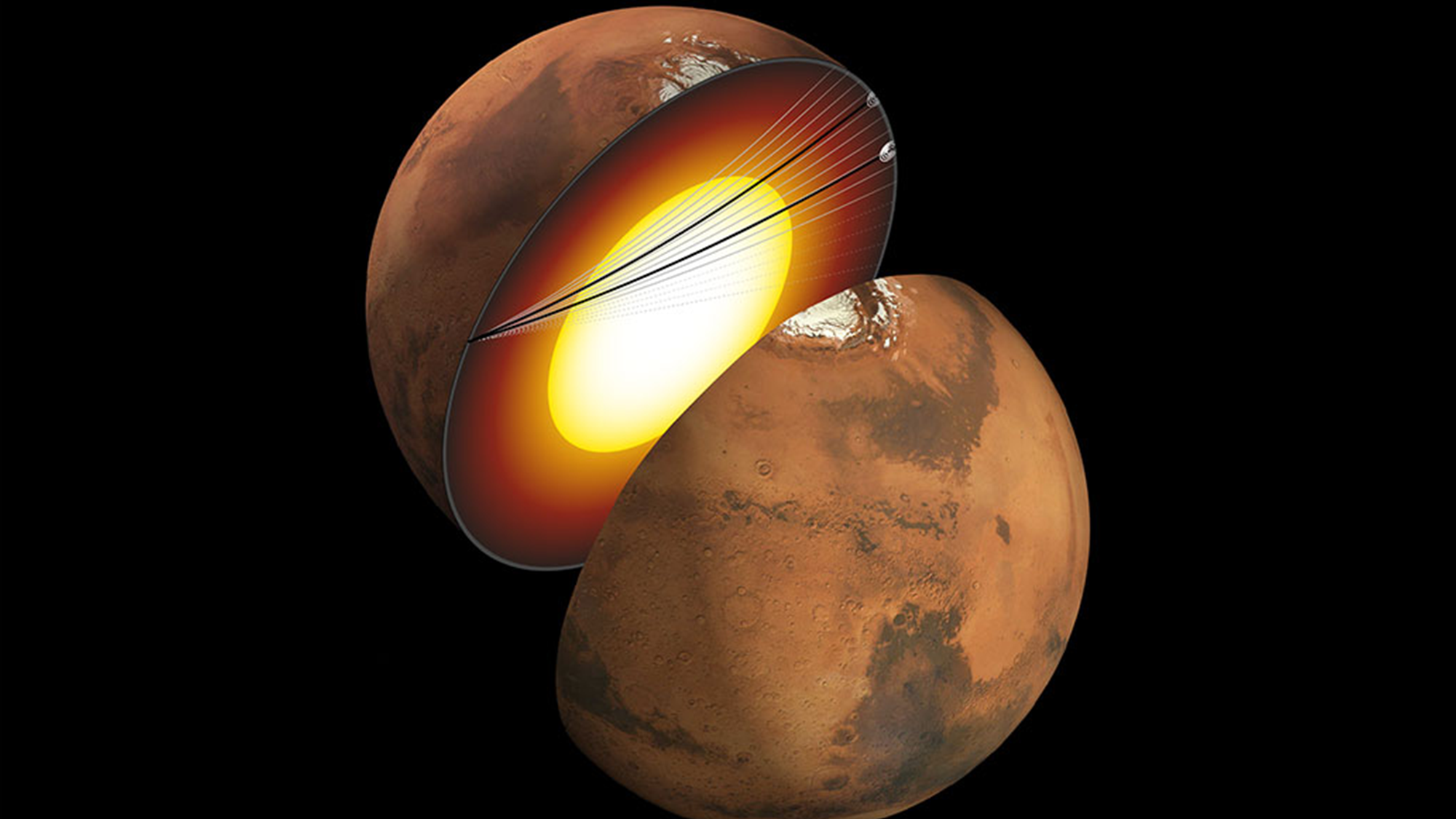

A giant seismic event on Mars—a “marsquake”—that shook the Red Planet last year had an unexpected source, surprising astrophysicists from around the world. They suspected a meteorite strike. Instead, enormous tectonic forces within Mars’s crust, which caused vibrations that lasted for six hours, caused the quake and not a meteorite strike. The findings are described in a study published October 17 in the journal Geophysical Research Letters.
[Related: Two NASA missions combined forces to analyze a new kind of marsquake.]
NASA’s InSight lander recorded the magnitude 4.7 marsquake on May 4, 2022, which scientists named S1222a. Its seismic signal was similar to those of previous quakes that were caused by meteorite impacts, so the team began to search for an impact crater.
In the new study, a team from the University of Oxford worked with the European Space Agency, Chinese National Space Agency, the Indian Space Research Organisation, and the United Arab Emirates Space Agency to scour more than 55 million square miles on Mars. Each group examined the data coming from its own satellites to look for a crater, dust cloud, or other signature of a meteorite impact. Because the search came up empty, they now believe that S1222a was caused by the release of huge tectonic forces from within the Martian interior.
That doesn’t mean Mars’s tectonic plates are moving the way they do during an earthquake. The best available evidence suggests the planet is remaining still. “We still think that Mars doesn’t have any active plate tectonics today, so this event was likely caused by the release of stress within Mars’ crust,” study co-author and University of Oxford planetary geophysicist Benjamin Fernando said in a statement. “These stresses are the result of billions of years of evolution; including the cooling and shrinking of different parts of the planet at different rates.”
While Fernando explains that scientists do not fully understand why some parts of Mars seem to have more stress than others, these results can help them investigate further. “One day, this information may help us to understand where it would be safe for humans to live on Mars and where you might want to avoid!” he said.

S1222a was one of the last events recorded by NASA’s InSight mission before its end. The InSight lander launched in May 2018 and survived “seven minutes of terror” to touch down on Mars, where it studied the planet’s interior and seismology for years. The last of the spacecraft’s data was returned in December 2022, after increasing dust accumulation on its solar panels caused InSight to lose power.
[Related: InSight says goodbye with what may be its last wistful image of Mars.]
In its four years and 19 days of service, InSight recorded more than 1,300 marsquakes. At least eight of these events were from a meteorite impact; the largest two formed craters that were almost 500 feet in diameter. If the S1222a event was formed by an impact, the team estimates that the crater to be would have been at least 984 feet in diameter.
The team is applying knowledge from this study to other work, including future missions to our moon and the tectonics that are similar to California’s famed San Andreas fault located on one of Saturn’s moons named Titan. They also hope that it encourages additional major international collaborations to study the Red Planet and beyond.
“This has been a great opportunity for me to collaborate with the InSight team, as well as with individuals from other major missions dedicated to the study of Mars,” study co-author and New York University Abu Dhabi astrophysicist Dimitra Atri said in a statement. “This really is the golden age of Mars exploration!”
